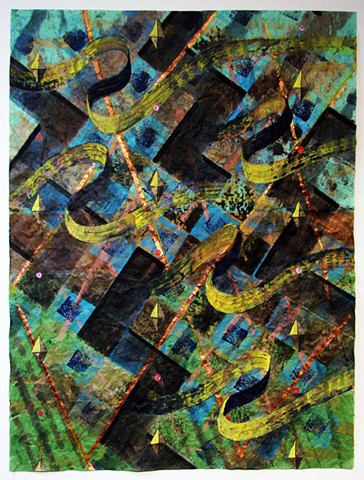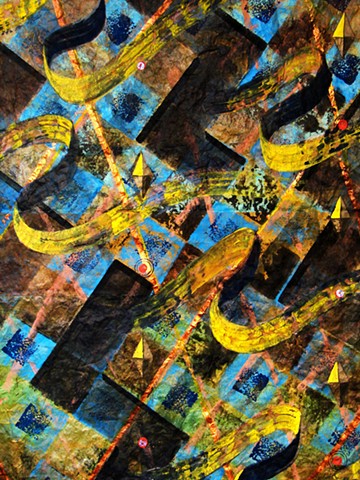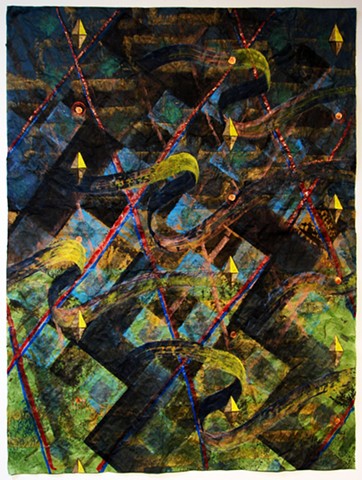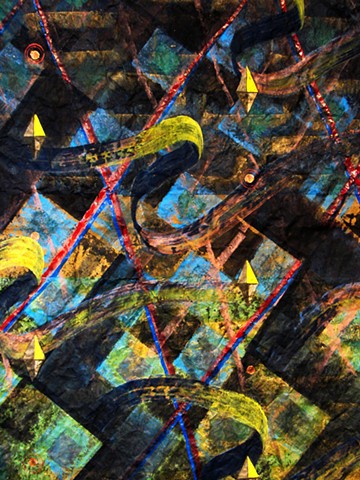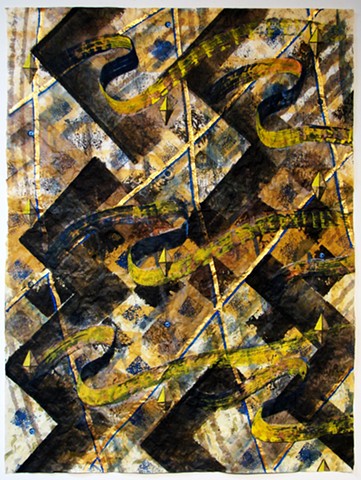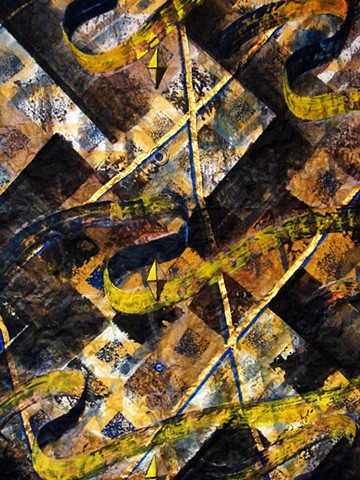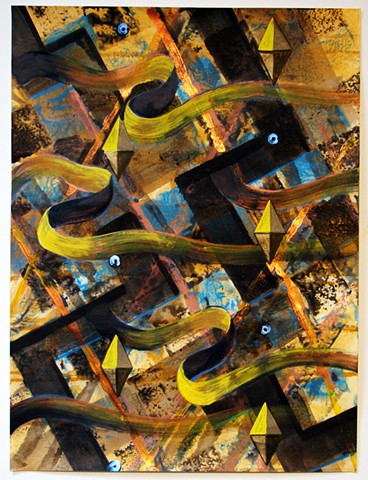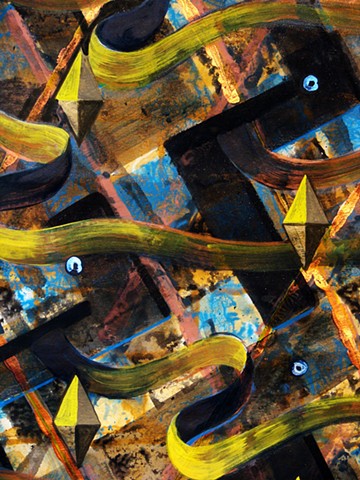Nothing From Nowhere Again
Being, Language, Thinking and Learning
The Big Bang is generally agreed upon, outside of the world’s theological cosmologies, as the incident of origin for, well, everything it seems. Recently theories about dark energy being the major component of this creation spectacle, including the idea that dark energy preceded it, suggest the need for a redefinition of both ‘nothing’ and ‘nowhere’.
Our modern sensibility tends towards the dichotomy of positive versus negative and certainly, both ‘nothing’ and ‘nowhere’ could fall squarely in the latter. It’s a value judgment of course but both point towards a negative destination, one that discourages the journey. Even the vague ‘somewhere,’ by comparison, calls to mind the possibility of a positive destination. Likewise, dark energy would end up with negative associations, since as social beings we avoid contact with the foreboding qualities it suggests. While we might agree that our existence began in a dark state, a chaotic state, there are in these conditions an almost instinctive balancing we bring as our minds move forward into a history of light and form, conditions we understand and that frame our being.
This is a psychic balance that we have learned in our short lifespans and it serves us as a survival mechanism. To imagine that all of our potential, including the self-preservative one just mentioned, would arise out of ‘dark energy’ exclusively, and that the ‘nothing’ and ‘nowhere’ of that state are the fecund wellspring of our existence, is a challenge that seems to contradict our capacity to ‘arise’, ascend into being with cognition and the ability to remember and learn. Of course, the theory of the Big Bang itself wasn’t always something that was assumed to be a feasible creation event. Generations had learned different cosmologies from myth and theology. But we relearn continuously and the conditioning that came with earlier ideas and assumptions is often put to rest.
A language of words and a language of images that we have catalogued over lifetimes fill our libraries and museum walls, our bookshelves and homes. This accumulation has enabled us to develop awareness and memory, giving us an understanding of how things work and why the forces around us enable this mechanistic viewpoint. The chaos of the Big Bang and the generation of something from the nothing of dark energy has been arranged according to our means of knowing – words, numbers, image, etc. – as an increasingly ordered view shapes the way we are able to accept and process phenomena into knowledge. This is a highly filtered process and our knowledge of the world is that repository that we continually shape into our relationship with our surroundings. The horror vacui is filled by an organizing principle that we have learned over generations so as to comprehend a place in our environment and its potential gifts and hazards. Often we succeed at inventing descriptive guidelines to help us understand our needs. But when these needs must be met with an amount of control over natural forces, we often find ourselves ill-prepared despite the words, images and calculations we have made. Underneath it all, we hope is a complete enough understanding to survive and flourish. Perhaps the ‘dark energy’, ‘nothing’ and ‘nowhere’ which remain unmappable are beyond the scope of what our experience can recognize.
Lao Tzu often characterized the wellspring of our existence as something that is inexplicably fecund, an infinite resource without the possibility of depletion. One way of describing infinity might be as something that can never be used up, a kind of cosmic legerdemain. While the positive life of forms that we inhabit gives us a tangible feeling for time and space, the negative world of dark energy feels like some sleight of hand. Our eyes and memory create, for most of us, a solid world view where light reflecting off objects and surfaces delivers a matrix to our minds that we can navigate, from place to place, from day to day. A reversal exists in states of ‘nothing’ and ‘nowhere’ and the negative or empty world we imagine as dark matter leaving us with no bearings, no spatial axis that we can learn or fit into.
Is this then, the wellspring? Should we anticipate the negative side of dark energy as the eventual return that the universe seems to promise for us all? The arrow of a human lifespan cannot embrace a dark return that we have never witnessed. We receive our evidence of the Big Bang from second-hand light. The second-hand dark of ‘nothing’ and ‘nowhere’ might not be something our eyes and brains can build upon. Is ‘nothing’ and ‘nowhere’ a test of faith in our sense of belonging to the universe we have so carefully described for ourselves?
